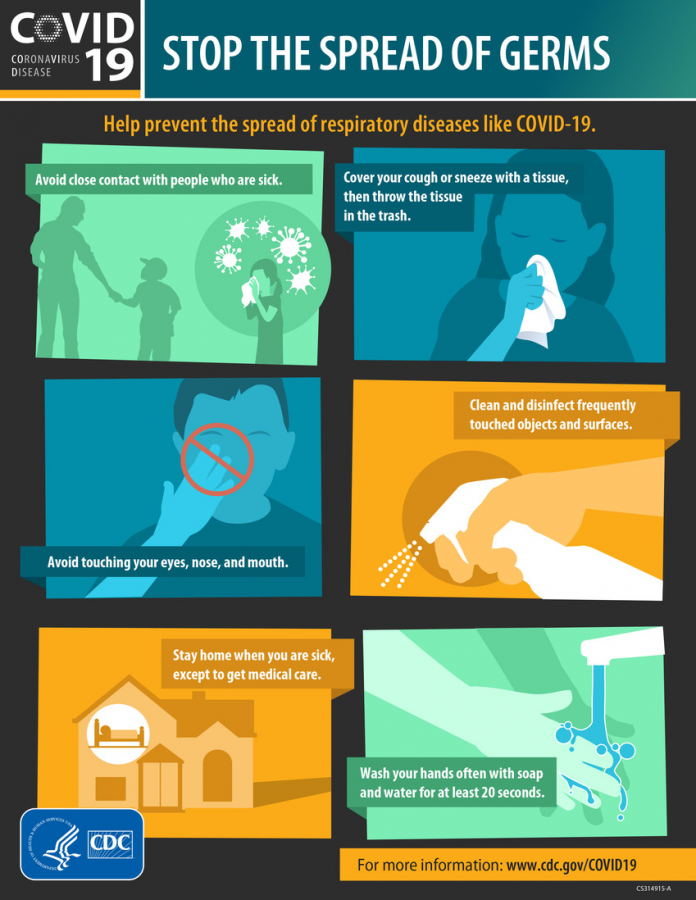COVID-19: What We Know
COVID-19 Medical Update March 16 | With Dr. Zubin Damania
March 16, 2020
COVID-19 is part of a viral family known as coronaviruses. It is a respiratory illness with large ranges of severity. The first reported case on Dec. 31 was in Wuhan Hubei, China. It was thought to be the result of exposure to animals at a seafood market. The cases increased due to the two-fourteen day incubation period when the virus can spread.
On Jan. 21, the first case was confirmed in the U.S. COVID-19 has a close relation to Severe Acute Respiratory Syndrome(SARS) & Middle East Respiratory Syndrome (MERS). The Center of Disease Control (CDC) reported a total of 7,038 cases in the U.S., with a total of 97 deaths, updated on March 18.
China’s issued a lockdown and emergency quarantine, which separates, restricts and prevents the movement of infectious diseases, with results beginning to show two months later. As of March 16 President Donald Trump said he is not considering placing the country under quarantine however things may change. In the meantime, he is limiting gatherings to 10 people. In many locations there are various stages already in effect depending on age, possible exposure or repository complications to limit the chances of catching it.
On March 11, the World Health Organization (WHO) declared COVID-19 a pandemic, a worldwide spread of a new disease. COVID-19 is not an airborne virus, which is transmitted through the air, spread through breathing, talking, coughing or sneezing. COVID-19 is spread through the respiratory droplets from coughs and sneezes and then transferred to the face. The droplets can travel six to eight feet which is why social distancing was put into place.
Although anyone can contract the virus, according to the CDC, 80 percent of people who catch the disease recover without treatment and only about one in six become seriously ill. The death percentage is between 0.4 and two percent mostly made of elderly, very young and those with underlying medical conditions.
Patients with milder cases of COVID-19 may experience dry coughs, fevers and shortness of breath. In more extreme cases, difficulty breathing, shortness of breath, persistent pain or pressure in the chest and bluish lips can develop. Symptoms may appear within two-fourteen days or soon after exposure.
There is no man-made vaccine for the virus, and, as of now, the CDC prescribes social distancing and keeping cleaning. Clinical trials are underway with young and healthy volunteers from places like Seattle young healthy people are volunteering to help develop a vaccine.
The CDC recommends if ill to stay home and disinfect touched services frequently as the virus can live up from hours to days at the most according to the CDC. When coughing or sneezing, one must cover their mouth and nose, throw away used tissues and immediately wash their hands with soap and water for at least 20 seconds, or use a hand sanitizer with at least 60% alcohol. Extra precautions include wearing a facemask. However, the CDC says this is not necessary unless caring for someone who has it. For additional information and tips visit the CDC’s website, https://www.cdc.gov/coronavirus/2019-ncov/about/index.html.








